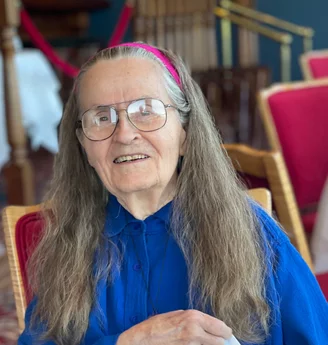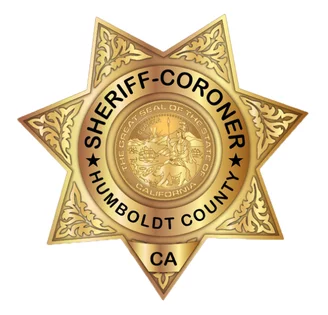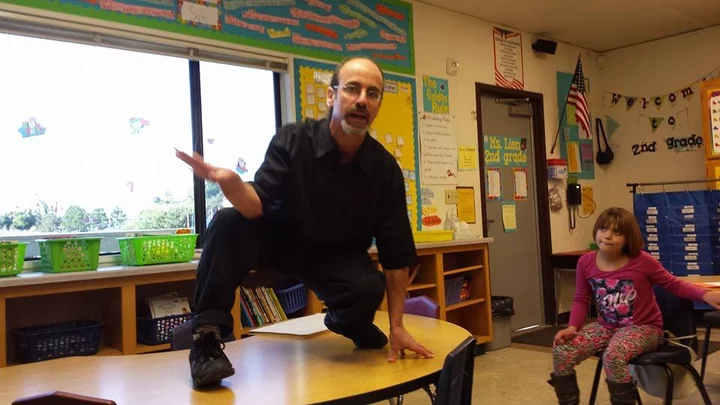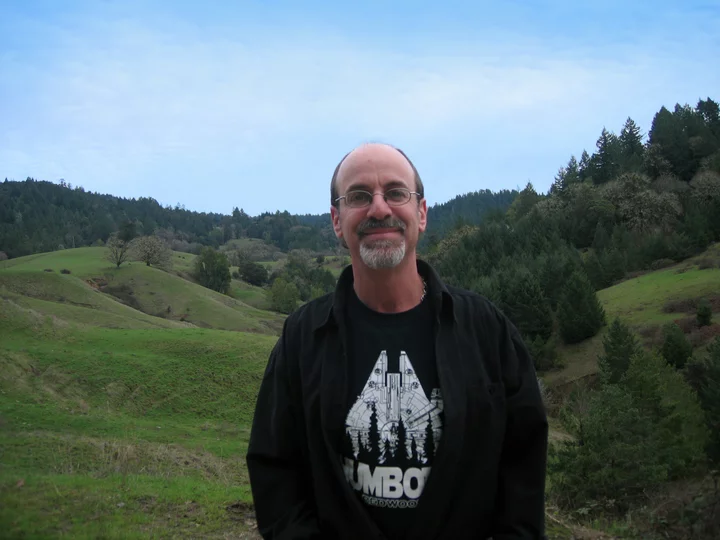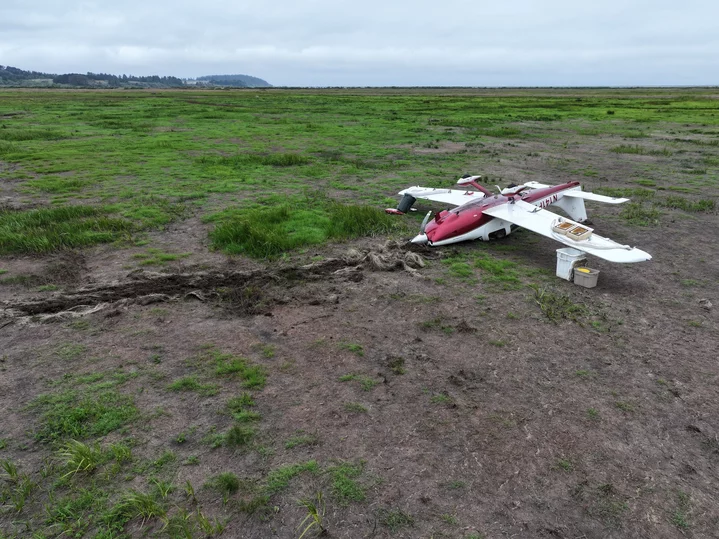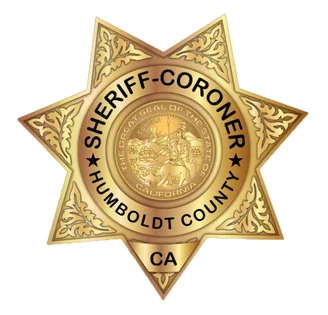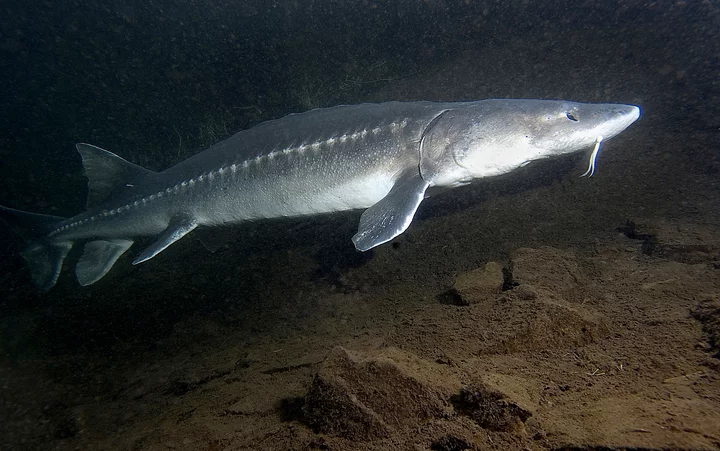OBITUARY: Dorothy Lee Mack, 1934-2024
LoCO Staff / Friday, June 21, 2024 @ 6:56 a.m. / Obits
Dorothy
Lee Mack passed away June 15, 2024, in Eureka. Dorothy was born on
Christmas Eve, 1934 and grew up in upstate New York. She was the
second child born to Guilford and Dorothy Mack. She had an older
sister named Helen who died in early childhood, and a younger brother
Guilford, now deceased. She was married twice, so also took the names
Lambert and Blackcrow.
She was a rebel, a tomboy and a rule breaker. She didn’t like dresses or dolls and preferred to play with boys or play the violin. She was an excellent student and a trailblazer, being one of the first women to attend college at Oberlin, get a PhD in linguistics and teach at the university level. She was proud to turn down an offer of graduate school admission at Harvard for a place at Yale, and that is where she met her first husband Robert Lambert. Dorothy and Robert had three children — two biological and one adopted — and named them after great poets: Emily Dickinson, Robert Frost and David Elliot King. Unfortunately the marriage did not last and Dorothy raised the children as a single parent.
Dorothy taught English to engineering students first in Chicago at the Illinois Institute of Technology, and then at the University of Michigan in Ann Arbor. She was one of the few female faculty in those days, part of the first generation of women to move out of the world of homemaking and into high level careers.
She was a Quaker activist who protested against nuclear proliferation and worked towards prison reform. She heard Martin Luther King Jr. give his famous “I have a Dream” speech at the Lincoln Memorial in 1963, with her first child, Emily, in tow.
In 1977 she made a major life change and left her post at the University of Michigan to marry Selo Blackcrow, a Lakota Sioux spiritual leader. She loved learning about Native American customs and culture and this became her passion. She discovered quiltmaking and made many native style star quilts. After a decade on the Pine Ridge Reservation she moved to Oregon to care for her elderly father and stayed on after his death in a little coastal community called Mirocco. Gardening was another of her interests, and she became certified as a master gardener.
Once in the Pacific Northwest Dorothy joined the Red Cedar Circle led by Johnny Moses, a Tulalip Native American storyteller and spiritual leader.
She enjoyed participating in writing seminars under the tutelage of Jim N. Frey, and published a memoir called Belonging to the Blackcrows and several native american murder mysteries including The Handless Maiden. Her love of adventure took her rafting along the Colorado River and kayaking in New Zealand in her 80s.
A lifelong Democrat, she volunteered as the precinct captain for her beloved Depoe Bay. When she passed away she had over 2,500 unread text messages from the Dems. Her spirit was generous and she gave away money and possessions freely to those she felt needed them more.
After decades on the Oregon Coast she moved to Eureka in 2021 to be closer to her daughter and grandson. She lived in The Meadows senior housing for three years and grew to love the community and my neighbors very much. Her cat, Maxi, was a great comfort to her.
She is survived by her three children, Emily Dalton, Robert Lambert Jr. and David Lambert and many grandchildren.
A memorial service will be held on August 10 in the afternoon near the Swinomish Reservation in Western Washington State. Contact Emily at dremily2@gmail.com for details.
Donations in her memory can be made to the
Red
Cedar Circle Society
Care
of Brett Clippingdale
3041
West Lake Sammamish Parkway NE
Redmond,
WA 98052
###
The obituary above was submitted on behalf of Dorothy Mack’s loved ones. The Lost Coast Outpost runs obituaries of Humboldt County residents at no charge. See guidelines here.
BOOKED
Today: 2 felonies, 5 misdemeanors, 0 infractions
JUDGED
Humboldt County Superior Court Calendar: Today
CHP REPORTS
No current incidents
ELSEWHERE
Governor’s Office: Governor Newsom announces judicial appointments 11.24.2025
RHBB: Efforts to Locate 15-Year-Old Liliana Foley Continue in Crescent City
Governor’s Office: While Trump turns his back on LA fire survivors, Governor Newsom issues order creating more flexibility for recovery and rebuilding
KINS’s Talk Shop: Talkshop November 24th, 2025 – Rob Arkley
(VIDEO) In the Dead of Night Friday, Someone Stole the County’s Pride Flag From the Pole Outside the Courthouse; Suspect Identified, Arrest Warrant Being Sought, EPD Says
Ryan Burns / Thursday, June 20, 2024 @ 5:15 p.m. / Crime
Late last Friday night, some discriminatory dickbag stole the Pride flag off the flagpole county courthouse flagpole.
The rainbow-festooned standard flies outside Humboldt County facilities each June in recognition of Lesbian, Gay, Bisexual, Transgender, Queer, Intersex and Asexual (LGBTQIA+) Pride Month.
In passing the Pride Month proclamation last year, the county Board of Supervisors defended “the rights of all citizens to experience equality and freedom from discrimination” and declared that the Pride flag “shall be raised annually throughout the month of June at County of Humboldt facilities.”
But bigots are gonna bigot, and one of ‘em apparently couldn’t abide the symbol of inclusivity.
In an opinion piece for the North Coast Journal this week, Fourth District Supervisor Natalie Arroyo observed that the vandal’s motives were clear: The theft “was meant to harm and disparage people.” Arroyo encouraged the public to “Speak up when people trivialize the importance of these symbols and the very identities of our fellow community members.”
In response to an emailed inquiry, Humboldt County Public Information Specialist Cati Gallardo sent the following statement:
The County of Humboldt is committed to supporting the visibility, safety, dignity and equality of 2SLGBTQIA+ people, as affirmed by the Board of Supervisors’ Pride Month Proclamation, unanimously approved on June 4. This proclamation acknowledges that the Pride flag shall be raised annually throughout June at county facilities, a practice started in 2022. Unfortunately, the flag was unlawfully removed from the courthouse last weekend.
###
Here’s a press release from the Eureka Police Department, which is handling the investigation:
On June 14, 2024 at approximately 11:40 pm, the Pride flag that had been flying on the flag pole at the Humboldt County Courthouse in honor of Pride month was stolen. The theft was reported to the Eureka Police Department on June 18, 2024 and assigned to our Criminal Investigations Unit to investigate.
The investigation revealed the suspect took the flag from the flag pole and placed it in his vehicle prior to leaving the scene. This criminal act was captured on surveillance cameras located at the courthouse. With the assistance of the Humboldt County Sheriff’s Department Criminal Investigators and their FLOCK camera system, the suspect vehicle was identified and a picture provided to our agency. Utilizing this information, a person of interest was identified.
On June 19, 2024, EPD Detectives and personnel responded to the suspect’s residence and conducted a probation search per their probation status. The stolen flag was not located during the search. The suspect was located a short time later at a different location and interviewed. During the interview the suspect admitted to stealing the flag. However, the suspect was not in possession of the flag and the flag’s current location is unknown.
An EPD Detective is authoring a warrant for the suspect’s arrest for theft and probation violation. We are dedicated to conducting thorough investigations, including those related to hate crimes that can significantly impact our community. According to California Law, a hate crime must involve the use of force, threats or the damaging, destroying or defacing of property. In this specific investigation, with the evidence that we have at this time, these elements were not present. If additional evidence is located or presented, it will be evaluated and used to charge additional offenses. The case will be forwarded to the District Attorney’s Office for further review and issuance of a warrant for the suspect’s arrest.
EPD Chief Brian Stephens states, “It’s absolutely unacceptable for anyone to steal the pride flag or any symbol that represents inclusivity and equality. Such actions are not only disrespectful but also hurtful to those who identify with a particular group or in the incident the LGBTQ+ community. Pride flags and symbols are important expressions of identity and solidarity, and everyone should be able to display them without fear of theft or damage. There is no place in our community or our society for hate and disrespect to one another.”
Sixty Years of CalPoets in Schools: Humboldt Poet-Teacher Dan Zev Levinson Reflects on His 92 Schools (and Counting)
Gillen Tener Martin / Thursday, June 20, 2024 @ 3:59 p.m. / Education
Photos courtesy Dan Zev Levinson.
At the peak of Timber Wars tension between loggers and environmentalists in 1996, pony-tailed poet-teacher Dan Zev Levinson arrived at Scotia Elementary School for what would be the first of many week-long stints in Humboldt County schools. He was “young,” “naive” and admittedly “a little worried that loggers would be upset” about his presence in the company town.
“I was kind of looking over my shoulder,” Levinson recounted in a sit-down with the Outpost, “and instead the community just completely embraced me.”
He has returned to teach poetry at Scotia Elementary almost every year since, often supported by a grant from Humboldt Redwood Company.
Levinson has also taught at more than 90 other schools over the last 28 years – including the vast majority of Humboldt’s TK-12 institutions, College of the Redwoods and Cal Poly Humboldt. From Arcata to Bridgeville, Blue Lake to Orleans, Cutten to Carlotta, Eureka to Petrolia, and on through many, many more, he has brought his poetry program to students as a California Poets in the Schools (CalPoets) teacher.
Levinson’s go-to move upon meeting a new group of students: jump on a table, perform Lewis Caroll’s seminal nonsense poem “Jabberwocky.”
Founded in 1964, and celebrating the big 6-0 this year, CalPoets serves the dual purpose of engaging young people in reading, writing and publishing poetry while providing a career path for poets.
“We try to offer the poets of California ways to make money off their craft through service,” said Megan Hamill, executive director of CalPoets and a former Sonoma County poet-teacher.
The challenge of paying bills as a poet was certainly a prompting factor in Levinson’s school teaching, but money hasn’t been the (only) reason he’s stuck with it. He said the week in Scotia opened a door to the joys and rewards of teaching young people.
“I think I was supposed to be teaching poetry to kids, it was definitely a calling,” said Levinson, who, with an MA in Literature and an MFA in Creative Writing, had intended to stay the professorial track and teach adults.
Despite a lifelong love of playing with language, Levinson said he had no guidance in poetry as a young person and wrote “bad poetry for a long time.” Now, giving the mentorship he lacked to 2nd-12th grade students, he said he sees how creating and sharing poetry provides children with agency, tools for self-expression, and a window into learning that they are not alone – “that they do have something to say and that people might be listening.”
And so people are. Books of student poetry that Levinson edits and publishes – such as Van Duzen Voice (by students in the Van Duzen River Watershed), Eel River Expressions (by Loleta Elementary students) and A Splash in the Slamming Water (the most recent of annual collections out of Orleans Elementary) – often circulate in families and communities after his courses conclude, allowing students to see their own work in print and call themselves published poets.
The outlet that poetry provides students can be particularly helpful in regions like Humboldt that have higher-than-average instances of Adverse Childhood Experiences (ACEs) such as abuse, neglect or other traumatic household factors shown to increase likelihoods of mental illness, substance use disorder and physical health issues later in life.
“We think of our work as a healing art,” Hamill said, describing how CalPoets classes aid social and emotional development by providing safe ways for children to share.
Modern-day child development seems to need all the help it can get, as studies are showing. Since 2012, loneliness and friendlessness among young people have surged while reading and math scores have plummeted (not only in the United States, but globally), as a recent Atlantic article by social psychologist Jonathan Haidt illustrated.
Haidt points the finger at today’s “phone-based childhood,” which aligns with the literacy skills concerns Levinson said he’s witnessed among educators since smartphones entered the schools he works in.
“How are literacy skills life skills?” he asked, answering: “If you can put your words down in a coherent and maybe beautiful way, there you go. That’s going to help you get a job, that’s going to help you be a better communicator.”
In recent years, Levinson has also oriented his teaching to the specific sort of emotional resilience he believes kids will need in the world they stand to inherit. As studies show that young people are increasingly worried about climate change, and increasingly affected day-to-day by those worries, Levinson, who stopped flying on planes in 2019 to limit his own fossil fuel use, has brought the subject into his classrooms.
“I’m not holding back. More and more each year, I talk about it,” he said, “And sometimes I am a little concerned that I might get a teacher who’s not happy with what I’m doing. But usually they are chiming in.”
“This is really all we should be talking about,” Levinson concluded.
In 2020, a poem by one of his Humboldt County students was published in California Fire & Water, “a project to teach kids across California to write poems about the climate crisis as a way to work out their feelings about it.”
After almost 30 years with CalPoets, Levinson’s teaching, and the scale of the organization’s work overall, is still dictated by the ebb and flow of available funding, which, since pandemic funds for nonprofits and arts organizations have dried up, has been in a definite “ebb,” according to Hamill, who estimated that CalPoets had around 65 certified poet-teachers serving 20 of the state’s 58 counties last school year.
She identified three interrelated factors contributing to the lean budgetary situation.
The first: California’s estimated $56 billion deficit, which Governor Gavin Newsom’s proposed to address in part by decreasing funding to the California Arts Council (CAC), a primary CalPoets funder, by 38%.
Arts organizations and advocates successfully pressured the California Legislature to partially roll back the $10 million cut – which, if passed, would have placed California 45th in per capita arts funding, as the San Francisco Chronicle reported – but the CAC budget is still slated to be cut by $5 million in the coming year.
Second, Hamill identified local government budget deficits, such as Humboldt County’s current $12.3 million shortfall, and the associated decline in arts-specific funding pathways offered by cities and counties.
“Arts are going up against the food bank,” she said, “That’s a hard place to be in. There’s a reason why there were separate pathways.”
Proposition 28, which provided nearly $1 billion in new arts and music funding to schools, is counterintuitively the final factor Hamill named. She explained that because poetry is not explicitly included in California’s arts education standards, it didn’t make its way into the acceptable uses of Prop. 28 funding. But organizations like the CAC took its November 2022 passage to mean “less of a need for arts education funding.”
“They think its covered,” she said, explaining that the decrease in CAC arts education grants since Prop. 28 has put CalPoets in a “tricky position.”
Stacy Young, community outreach & engagement director at the Humboldt County Office of Education (HCOE), confirmed via email to the Outpost that she has also seen decreased CAC funding opportunities impact HCOE partners in the arts locally.
Speaking to the statewide level, Hamill said that budget constrictions are “difficult for both poets and kids that have become accustomed to the program.”
But Levinson, who’s taught through “fat and lean” funding years, said he believes local support for the arts and arts education has only increased over the decades he’s lived in Humboldt. He said that the feedback he continues to receive from parents and schools has helped him to know that he’s following his calling, despite the administrative hassle of scheduling and cobbling together funding for the 20-25 teaching stints he averages annually.
“Some students say they hate writing. And then after I am done, I’ll get reports from teachers and parents that the kid now keeps a journal,” Levinson said.
“If I can get them to fall in love with poetry, they suddenly become writers.”
Despite funding constraints, CalPoets anticipates an additional 10 certified poet-teachers next school year, bringing the statewide count to 75, according to Hamill.
Levinson also teaches workshops with adults at the Lost Coast Writers Retreat and is the author of two books (each an epic-length poem): Song of Six Rivers (available in local bookstores) and The Sauntering.
Levinson.
(UPDATE: PHOTOS OF THE CRASH) Airplane Makes Emergency Landing in the Humboldt Bay National Wildlife Refuge Across From CR
Hank Sims / Thursday, June 20, 2024 @ 11:07 a.m. / Emergencies
Photos: Submitted.
UPDATE, 2:58 p.m.: The following information comes from the Humboldt County Sheriff’s Office:
On June 20th, 2024, at about 10:35 a.m.., Humboldt County Sheriff’s deputies were dispatched to the Humboldt Bay National Wildlife Refuge in the Loleta area for a report of a possible small aircraft accident. Other emergency services to include the California Highway Patrol, California Department of Fish and Wildlife, U.S. Fish and Wildlife Service – Humboldt Bay Refuge, Loleta Volunteer Fire Department, and City Ambulance also responded.
Once on scene, responding personnel were able to locate a small, single engine, fixed winged aircraft that had come to rest upside down in a dry marsh area. The pilot and sole occupant of the aircraft, 67 year-old Joseph McCoy of Napa, was found to be uninjured.
Preliminary information indicates McCoy had just departed the Eureka area when the aircraft lost power, resulting in McCoy making an emergency landing at the refuge. Upon landing, the soft ground of the marsh appears to have contributed to the aircraft coming to rest in an inverted position. McCoy was able to extricate himself from the aircraft and contact emergency services.
Officials with Humboldt County Environmental Health later responded to assist with evaluating and containing any possible fluid leakage from the aircraft. The National Transportation Safety Board will be conducting an investigation into the potential cause of this incident.
The Humboldt County Sheriff’s Office would like to thank all allied agencies that responded to assist.
Anyone with information related to this case is encouraged to call the Humboldt County Sheriff’s Office at (707) 445-7251.
# # #
UPDATE, 2:48 p.m.: Drone pictures from the site of the crash show that the plane seems to have gone end-over-end just before coming to a stop on the ground.
Still no word on what caused the crash — or “emergency landing,” if you prefer — but, again: The pilot is OK.
###
Original Post: Not a whole lot of info at the moment, but just at about 10:30 a.m. an aircraft made an emergency landing in the Humboldt Bay National Wildlife Refuge.
California Highway Patrol dispatch took a report of the incident, which you can see here.
I say “emergency landing” rather than “crash,” because according to rescuers who made it out to the scene the pilot is OK and not requesting medical attention.
We’ll update when we know more.
High Court Blocks Anti-Tax Measure From California Ballot
Alexei Koseff / Thursday, June 20, 2024 @ 10:14 a.m. / Sacramento
The California Supreme Court sided with Gov. Gavin Newsom and Democratic leaders in the Legislature on the constitutionality of a sweeping anti-tax measure, ruling today that it cannot go before voters in November.
The business community-sponsored initiative, formally known as the Taxpayer Protection and Government Accountability Act, broadly aims to make it more challenging to raise taxes in California, including by requiring the Legislature to seek approval from the voters for any new or higher state tax.
Newsom and legislative leaders sued last fall to stop the measure, arguing that it amounts to an illegal attempt to revise the California Constitution and would impair essential government functions.
In a unanimous decision, the Supreme Court agreed, ordering Secretary of State Shirley Weber to refrain from taking any steps to place the initiative on the Nov. 5 ballot.
The proposed changes “are within the electorate’s prerogative to enact,” Justice Goodwin Liu wrote, “but because those changes would substantially alter our basic plan of government, the proposal cannot be enacted by initiative.”
Proponents, led by the California Business Roundtable, introduced the initiative to crack down on what they contend are loopholes created by legislators and court rulings that weakened previous voter-approved tax accountability measures and allowed an unelected administrative bureaucracy to flourish. It has been heavily supported by the real estate industry and a private ambulance company, which frequently battle local governments over taxes, fees and assessments to fund public services.
The measure would also increase the margin to pass a voter-initiated special tax at the local level, to two-thirds from a simple majority; restrict how officials can calculate the cost of fees that fund public services and programs; and reclassify some of those charges as taxes.
These changes could upend the operation of California government at every level, prohibiting administrative agencies from setting levies and requiring the Legislature or local governments to turn to the voters to adjust them. Cities, counties and the unions that represent their employees have raised alarms that the initiative would blow a hole in their budgets, threatening their ability to provide essential services.
Opponents argued in court during a hearing last month that, rather than simply amending tax law in the state constitution, this amounted to a fundamental restructuring of how government operates — a more substantial change that can only be proposed by a two-thirds vote of the Legislature or through a constitutional convention. The initiative’s proponents countered that the power of the legislative branch has always been shared with the public and urged the justices not to intervene in a political conflict that should be settled by voters.
Democratic lawmakers had already placed a competing measure on the November ballot designed to undermine the California Business Roundtable initiative.
The legislative measure flips the California Business Roundtable’s own higher standards around, requiring any changes to the threshold for approving state and local taxes pass by that same margin. So if voters adopt it, the tax initiative would need to secure two-thirds support from the electorate to become law, rather than a simple majority, a high hurdle for a statewide ballot measure.
###
CalMatters.org is a nonprofit, nonpartisan media venture explaining California policies and politics.
Could AI Reject Your Resume? California Tries to Prevent a New Kind of Discrimination
Khari Johnson / Thursday, June 20, 2024 @ 7:08 a.m. / Sacramento
Illustration by Adriana Heldiz, CalMatters; iStock
California regulators are moving to restrict how employers can use artificial intelligence to screen workers and job applicants — warning that using AI to measure tone of voice, facial expressions and reaction times may run afoul of the law.
The draft regulations say that if companies use automated systems to limit or prioritize applicants based on pregnancy, national origin, religion or criminal history, that’s discrimination.
Members of the public have until July 18 to comment on the proposed rules. After that, regulators in the California Civil Rights Department may amend and will eventually approve them, subject to final review by an administrative law judge, capping off a process that began three years ago.
The rules govern so-called “automated decision systems” — artificial intelligence and other computerized processes, including quizzes, games, resume screening, and even advertising placement. The regulations say using such systems to analyze physical characteristics or reaction times may constitute illegal discrimination. The systems may not be used at all, the new rules say, if they have an “adverse impact” on candidates based on certain protected characteristics.
The draft rules also require companies that sell predictive services to employers to keep records for four years in order to respond to discrimination claims.
A crackdown is necessary in part because while businesses want to automate parts of the hiring process, “this new technology can obscure responsibility and make it harder to discern who’s responsible when a person is subjected to discriminatory decision-making,” said Ken Wang, a policy associate with the California Employment Lawyers Association.
The draft regulations make it clear that third-party service providers are agents of the employer and hold employers responsible.
The California Civil Rights Department started exploring how algorithms, a type of automated decision system, can impact job opportunities and automate discrimination in the workplace in April 2021. Back then, Autistic People of Color Fund founder Lydia X. Z. Brown warned the agency about the harm that hiring algorithms can inflict on people with disabilities. Brown told CalMatters that whether the new draft rules will offer meaningful protection depends on how they’re put in place and enforced.
Researchers, advocates and journalists have amassed a body of evidence that AI models can automate discrimination, including in the workplace. Last month, the American Civil Liberties Union filed a complaint with the Federal Trade Commission alleging that resume screening software made by the company Aon discriminates against people based on race and disability despite the company’s claim that its AI is “bias free.” An evaluation of leading artificial intelligence firm OpenAI’s GPT-3.5 technology found that the large language model can exhibit racial bias when used to automatically sift through the resumes of job applicants. Though the company uses filters to prevent the language model from producing toxic language, internal tests of GPT-3 also surfaced race, gender, and religious bias.
“This new technology can obscure responsibility.”
— Ken Wang, policy associate with the California Employment Lawyers Association
Protecting people from automated bias understandably attracts a lot of attention, but sometimes hiring software that’s marketed as smart makes dumb decisions. Wearing glasses or a headscarf or having a bookshelf in the background of a video job interview can skew personality predictions, according to an investigative report by German public broadcast station Bayerischer Rundfunk. So can the font a job applicant chooses when submitting a resume, according to researchers at New York University.
California’s proposed regulations are the latest in a series of initiatives aimed at protecting workers against businesses using harmful forms of AI.
In 2021, New York City lawmakers passed a law to protect job applicants from algorithmic discrimination in hiring, although researchers from Cornell University and Consumer Reports recently concluded that the law has been ineffective. And in 2022, the Equal Employment Opportunity Commission and the U.S. Justice Department clarified that employers must comply with the Americans with Disabilities Act when using automation during hiring.
The California Privacy Protection Agency, meanwhile, is considering draft rules that, among other things, define what information employers can collect on contractors, job applicants, and workers, allowing them to see what data employers collect and to opt-out from such collection or request human review.
Pending legislation would further empower the source of the draft revisions, the California Civil Rights Department. Assembly Bill 2930 would allow the department to demand impact assessments from businesses and state agencies that use AI in order to protect against automated discrimination.
Outside of government, union leaders now increasingly argue that rank-and-file workers should be able to weigh in on the effectiveness and harms of AI in order to protect the public. Labor representatives have had conversations with California officials about specific projects as they experiment with how to use AI.
###
CalMatters.org is a nonprofit, nonpartisan media venture explaining California policies and politics.
This Giant Freshwater Fish — North America’s Largest — Gains California Protection
Rachel Becker / Thursday, June 20, 2024 @ 7:04 a.m. / Sacramento
White sturgeon. Photo: Oregon Department of Fish and Wildlife. Public domain, via Wikimedia.
Killed by algae blooms and dwindling from dams and droughts, the largest freshwater fish in North America is at risk in California. On Wednesday, wildlife officials took the first major step toward protecting it under the state’s Endangered Species Act.
White sturgeon, which can live longer than 100 years, historically reached more than 20 feet long and weighing almost a ton. Facing an array of threats, this shark-like, bottom-feeding fish with rows of bony plates, whisker-like sensors and no teeth has declined — and their numbers will likely continue to drop.
California’s Fish and Game Commission unanimously approved white sturgeon as a candidate for listing, which launches a review by the Department of Fish and Wildlife to evaluate whether it is in enough danger to warrant being declared threatened or endangered. The review is expected to take at least a year.
In the meantime, the fish will be protected under the California Endangered Species Act until the commission makes a final decision whether to list it as threatened or endangered. Harming or “taking” a species with any kind of project — such as water diversions — or activity such as fishing is “prohibited for candidate species the same as if it was fully listed,” said Steve Gonzalez, a spokesperson for the fish and wildlife agency. Permits and exemptions, however, can be granted in certain situations, he said.
The decision comes in response to a petition filed by a coalition of environmental groups and the California Sportfishing Protection Alliance for the species to be listed. They await a verdict on a federal petition, as well.
“This is an ancient lineage … they’ve withstood everything that Mother Nature had to throw at them, which makes it particularly poignant that they’re having trouble surviving us,” Jon Rosenfield, science director of San Francisco Baykeeper, one of the four groups that led the petition, told commissioners Wednesday.
California’s wild white sturgeon migrate between San Francisco Bay and the rivers of the Central Valley, largely the Sacramento River. They successfully reproduce only every six to seven years — typically during wetter years when more water flows out of the Delta.
Back-to-back algal blooms in the San Francisco and San Pablo bays killed large numbers of sturgeon during the past two summers. Nearly 870 carcasses were recovered in the summer of 2022, and at least 15 last summer. Experts believe thousands more likely died and sank to the bottom of the bays.
Overfishing for sturgeon eggs — caviar — and smoked fish drove the species to near-extirpation in California by the turn of the 20th century. For more than 100 years, commercial fishing of white sturgeon has been banned.

In this photo from the 1980s, an angler pulls a large white sturgeon aboard his boat in San Francisco Bay. Under current restrictions, recreational fishing of the fish is limited to one fish per year no longer than 4 feet long. Photo via the National Oceanic and Atmospheric Association.
California’s emergency rules for the recreation fishery, adopted in 2023, already reduced the maximum size limit of harvested fish from 5 feet to 4 feet, and cut the annual catch total from three fish to one.
Now the sturgeon’s temporary status as a candidate for listing will ban recreational fishing, unless the commission later grants an exemption sought by fishing groups.
Without an exemption, the decision “has the potential to cause irreparable damage (to) the business and recreational anglers who fish for White Sturgeon in California’s coastal, Delta, and inland waters,” fishing groups wrote in a letter in early June. “Recreational angling is not the cause of concern to the health of this fishery. Instead, this fishery is suffering from the mismanagement of our precious and limited water supplies.”
Many aquaculturists who farm domesticated sturgeon for caviar and meat raised concerns at the meeting, and commissioners reassured them that the regulation would not affect them. Indoor-farmed white sturgeon are included on lists of fish that experts consider sustainable and recommend for consumption.
Environmental groups said that without more protection, the fish will become even more imperiled as climate change squeezes water supplies, fishing continues and major projects planned for the region, such as the Delta tunnel, deplete more freshwater flows.
The die-offs during the past two summers “exacerbated…an already unsustainable level of fishery exploitation of White Sturgeon into a crisis situation,” wildlife staff wrote in a report for the Fish and Game commissioners. “In order to protect the surviving population of White Sturgeon and maintain a recreational fishery into the future, immediate steps were necessary.”
Sturgeon ancestors date back to the Cretaceous Period more than 120 million years ago, making them the most prehistoric and primitive of all bony fish. Instead of teeth, they have a long snout like a vacuum cleaner used to scrounge for bottom-dwelling shellfish, worms and mall fish to swallow whole. Today the largest ones grow to 10 feet and 400 pounds.
The rivers of the Central Valley, primarily the Sacramento River system, are among the few places where white sturgeon reproduce in the wild. Others include the Fraser River in British Columbia and the lower Columbia River in Oregon and Washington.
Their numbers in California are dropping, plummeting from a historical abundance of 200,000 harvestable fish to a recent five-year average of about 33,000, according to the Fish and Wildlife department.
The threats are many: Over the centuries, the Sacramento and San Joaquin River watersheds and San Francisco Bay have been fundamentally replumbed. Now water diversions for farms, cities and hydropower sap flows and dams limit migration. Pumping kills fish; introduced predators eat the young. Contaminants taint the waterways and poachers illegally harvest wild fish for their eggs.
A coalition representing water users in the Delta contested data pointing to long-term declines but commissioners dismissed that concern.
The Department of Water Resources, which operates the major water project funneling water south from Northern California rivers, will now need to apply to the state wildlife agency for a “take” permit for operations and fish screens at pumping facilities.
“We’ve already begun that process in anticipation of the candidacy being reached today,” said Lenny Grimaldo, environmental director of the State Water Project. He said the project takes “takes relatively low numbers of white sturgeon in any given year.”
State officials working on the proposed Delta tunnel project also are evaluating impacts to white sturgeon and plan to investigate how sturgeon respond to fish screens and river flows, Grimaldo said.
Before yesterday, white sturgeon were considered a “species of special concern” — meaning it had no protection but that continued population or habitat declines could qualify it as threatened or endangered. Green sturgeon, California’s other sturgeon species, are already listed as threatened under federal law.
Chris Schutes, executive director of the California Sportfishing Protection Alliance, one of the organizations that signed the petition, said it was a difficult decision to call for more protection.
He said California’s sport and commercial fishing industries are already reeling from the cancellation of salmon fishing for the second year in a row. Losing the ability to fish for white sturgeon adds to the burden.
“Many party boat skippers feel it’s going to affect them — that people won’t want to fish, if there’s not some chance that they can take a fish home,” Schutes said.
Still, he added, the goal is to get ahead of population declines before it’s too late to reverse them.
“Sometimes, I think we only see crises in retrospect, when we should have seen them sooner. And I think that we’re at that point — and it’s time to do something.”
###
CalMatters.org is a nonprofit, nonpartisan media venture explaining California policies and politics.

